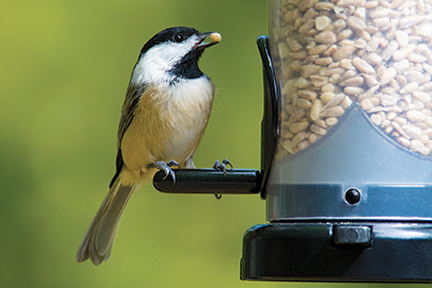Watch Our Barred Owl Nest Cam!
Owl Cam 1: Inside the Nest Box
Jim Carpenter, Founder & CEO of Wild Birds Unlimited, has hosted the Wild Birds Unlimited Barred Owl Cam in his wooded backyard for almost 20 years. You can watch the entire process as it happens, from the eggs hatching all the way up to the owlets fledgling.
Owl Cam 2: Outside the Nest Box
We’ve installed a second camera so you can see the nest box opening from the outside. Watch for Papa Owl to bring food to Mama and see all of their comings and goings. Later in the season, you’ll be able to see the nestlings once they begin peering out of the nest box entrance prior to branching.


















Feeder Cam at Cornell Lab
Located in the Treman Bird Feeding Garden at the Cornell Lab of Ornithology, this feeder cam is perched on the edge of both Sapsucker Woods and its 10-acre pond. The feeders attract both forest species like chickadees and woodpeckers as well as some species that prefer open environments near water like Red-winged Blackbirds.


















Red-Tail Hawk Cam at Cornell Lab
A Red-tailed Hawk pair has been nesting above Cornell University’s athletic fields since at least 2012, making use of two different light towers for their nest sites. Egg laying begins in late March, and eggs hatch roughly 28 to 35 days after they are laid. The young fledge around 42 days of age.


















Wisconsin Kestrel Cam
The kestrels are nesting on private property near Prairie Du Chien, Wisconsin. Their nest box, located on the side of a traditional limestone-footed barn, overlooks a rolling grassland that slopes away into the folded hills and forests of the driftless. In general, the kestrels return to their box in February or March. Egg-laying begins in April or May, and eggs hatch roughly 26 to 32 days after they are laid. The young fledge between 28 and 31 days of age. Like peregrine falcons and bald eagles, American kestrel fledglings remain near the nest before dispersing in late summer.

